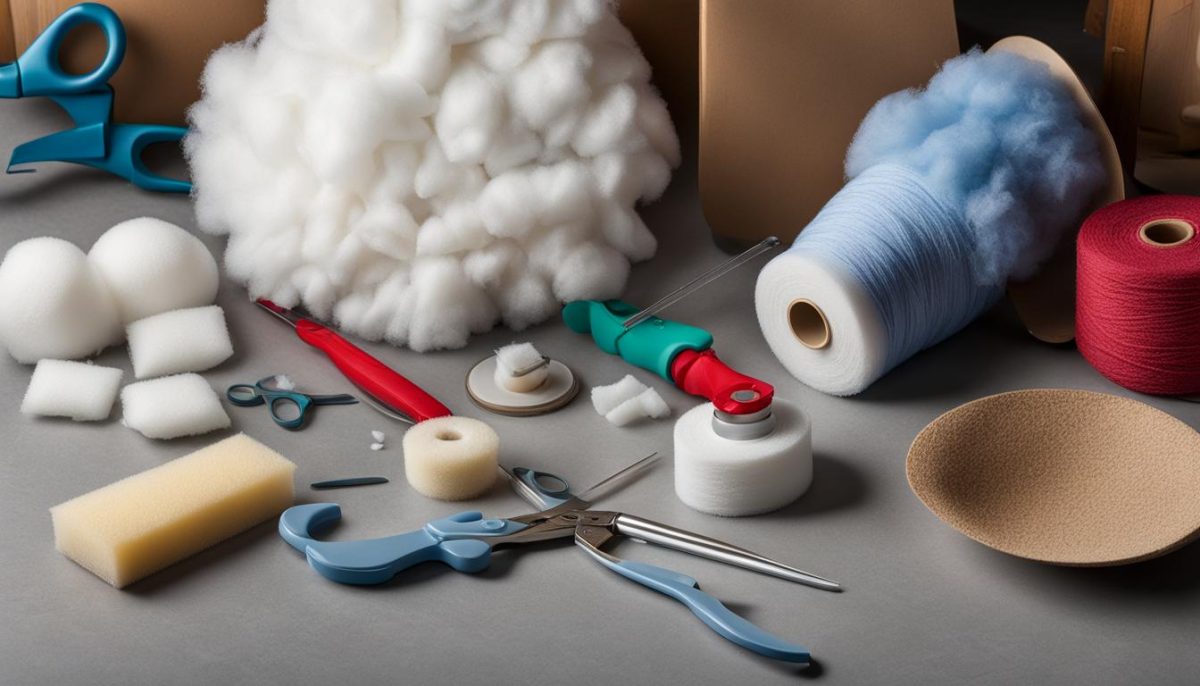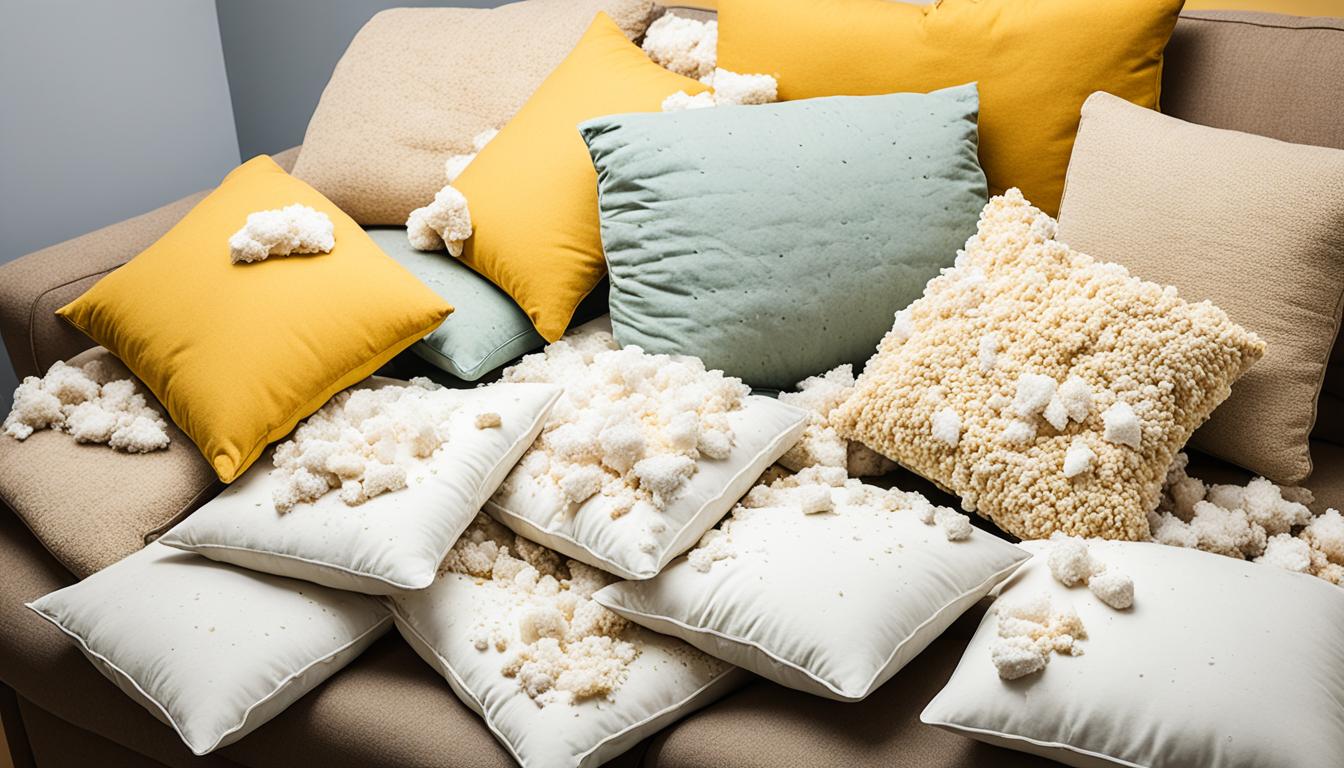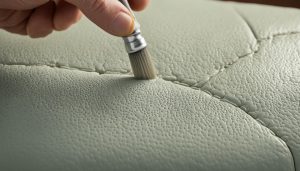Welcome to our easy-to-follow guide on how to restuff your couch cushions and revive your sofa’s comfort. If your cushions have lost their plushness and support, don’t worry! With just a few simple steps, you can bring back the life to your seating area and enjoy the ultimate comfort once again.
In this comprehensive guide, we will walk you through the essential steps and techniques to successfully restuff your couch cushions. Whether you have foam inserts or batting, our instructions will ensure that you achieve professional-quality results. Say goodbye to sagging cushions and hello to a cozy and inviting sofa.
Restuffing your couch cushions doesn’t have to be a daunting task. With our easy-to-follow instructions, you’ll be able to transform the comfort and appearance of your sofa in no time. Say goodbye to sinking cushions and hello to a rejuvenated seating experience that your family and guests will love.
Are you ready to restore your sofa’s comfort? Let’s get started with our step-by-step guide to achieve plush results and breathe new life into your favorite couch.
Understanding Couch Cushions
Before starting the restuffing process, it’s crucial to have a good understanding of the different types of couch cushions and their construction. This knowledge will not only help you make informed decisions when restuffing your cushions but also enable you to take proper care of them in the long run.
Couch cushions come in various materials and styles, each offering unique characteristics and benefits. Let’s take a closer look at some commonly found types of couch cushions:
- Foam Cushions: These cushions are made from polyurethane foam and provide excellent support and durability. They come in different densities and firmness levels, catering to different comfort preferences.
- Down Cushions: Filled with feathers and down, these cushions offer a luxurious and soft feel. They are known for their exceptional comfort but require regular fluffing to maintain their shape.
- Polyester Fiberfill Cushions: These cushions are filled with a synthetic polyester material that provides a plush and fluffy feel. They are easy to maintain and maintain their shape well over time.
- Spring Core Cushions: These cushions contain a coil spring system, providing excellent support and bounce. They are commonly found in higher-end sofas and offer exceptional comfort.
- Memory Foam Cushions: Made from viscoelastic foam, memory foam cushions mold to the shape of your body, providing personalized support and pressure relief. They are ideal for those seeking optimum comfort and pain relief.
Regular cushion maintenance is vital to extend the lifespan of your couch cushions and keep them in excellent condition. By following some simple maintenance practices, you can prevent premature wear and tear and ensure that your cushions stay comfortable for years to come.
“Proper cushion maintenance not only enhances your comfort but also helps protect your investment in furniture.”
To maintain your couch cushions:
- Regularly fluff and rotate the cushions to distribute the filling evenly and prevent sagging.
- Keep your cushions away from direct sunlight to prevent fading and damage to the fabric.
- Clean any spills or stains promptly with a mild upholstery cleaner.
- Vacuum your cushions regularly to remove dust and debris.
By understanding the different types of couch cushions and practicing regular maintenance, you can ensure that your cushions remain comfortable, supportive, and visually appealing for years to come.
Tools and Materials Needed for Restuffing
Restuffing your couch cushions requires the right tools and materials to ensure a successful outcome. Here is a comprehensive list of everything you’ll need:
Tools:
- Scissors
- Sewing kit
- Staple gun
- Pliers
- Tape measure
Materials:
- Foam inserts or batting
- Dacron (polyester) batting
- Zipper or velcro
- Upholstery fabric
- Thread
- Needles
Different restuffing projects may require additional tools or materials, depending on the condition of your cushions and your desired results. It’s always a good idea to assess your specific needs before starting the process.
Remember, having the right tools and materials on hand will make the restuffing process much easier and ensure professional-quality results.
Now that you have all the necessary tools and materials, you’re ready to move on to the next section and learn the step-by-step guide for restuffing your couch cushions.

Step-by-Step Guide to Restuffing Couch Cushions
Restuffing your couch cushions is a simple and cost-effective way to revive the comfort and appearance of your sofa. Follow this step-by-step guide to achieve professional-quality results and transform your seating experience.
The first step is to remove the old stuffing from your cushions. Carefully unzip the cushion covers and take out the existing filling. If the cushions are overstuffed or lumpy, you may need to use a small knife or scissors to cut open the seams. Ensure you remove all the old stuffing, making sure to get into the corners and crevices.
Next, measure and cut your new foam inserts or batting. Use a ruler or measuring tape to determine the dimensions needed for each cushion. If you are using foam inserts, place the old cushion cover on top of the foam and trace around it with a marker. Use scissors or an electric knife to cut along the marked lines. For batting, measure the dimensions of the cushion and cut the batting slightly larger to ensure a snug fit.
Once you have the new inserts or batting ready, it’s time to sew the cushions back together. Thread a needle with a durable thread that matches the color of your cushion covers. Start by closing any open seams using a ladder stitch or a simple whip stitch. Make sure the stitches are secure and evenly spaced. Continue sewing until all the open seams are closed, and your cushions are fully reassembled.




